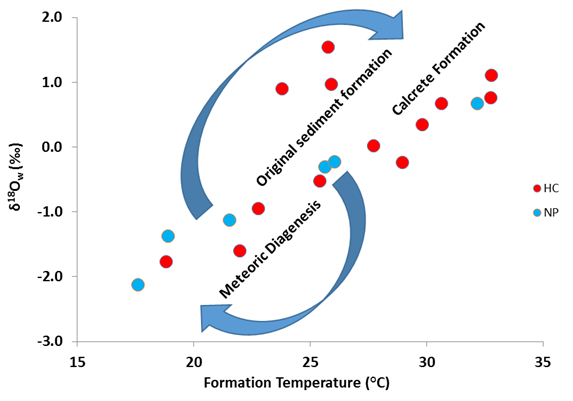Reports: ND252863-ND2: Testing the 'Clumped Isotope Method' Under Conditions of Well-Constrained Diagenesis
Peter K. Swart, University of Miami
We measured the clumped
isotopic compositions of approximately 35 non-diagenetically altered recent
biogenic and non-biogenic carbonate samples collected from GBB. Such data are
expected to serve as a reference line for future diagenetic studies and is
crucial to determine the influence of early diagenesis on clumped signatures There is a correlation
between clumped signals and temperature estimates in the original mainly non-biogenic
sediments of GBB (Figure 1). However, there may also be some facies control as
the clumped signals increase and temperature values decrease from muddy facies to
grainy facies. Figure 2:
The calculated formation
temperature (using clumped isotopes) and the oxygen isotopic composition of
water from Hog Cay (HC) and New Providence (NP) with pathways of potential
change during meteoric diagenesis. Meteoric Diagenesis

![]() in marine
environments.
in marine
environments. 











